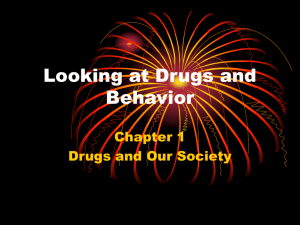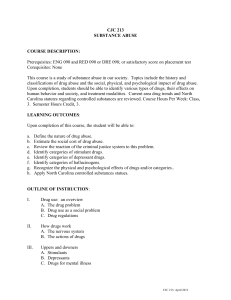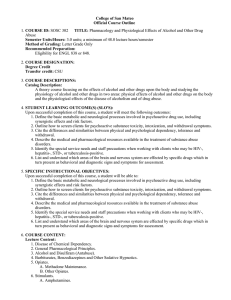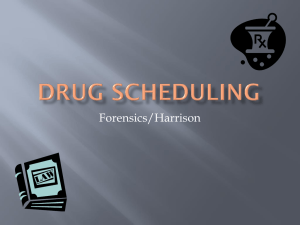What Is A Substance Of Abuse?
advertisement
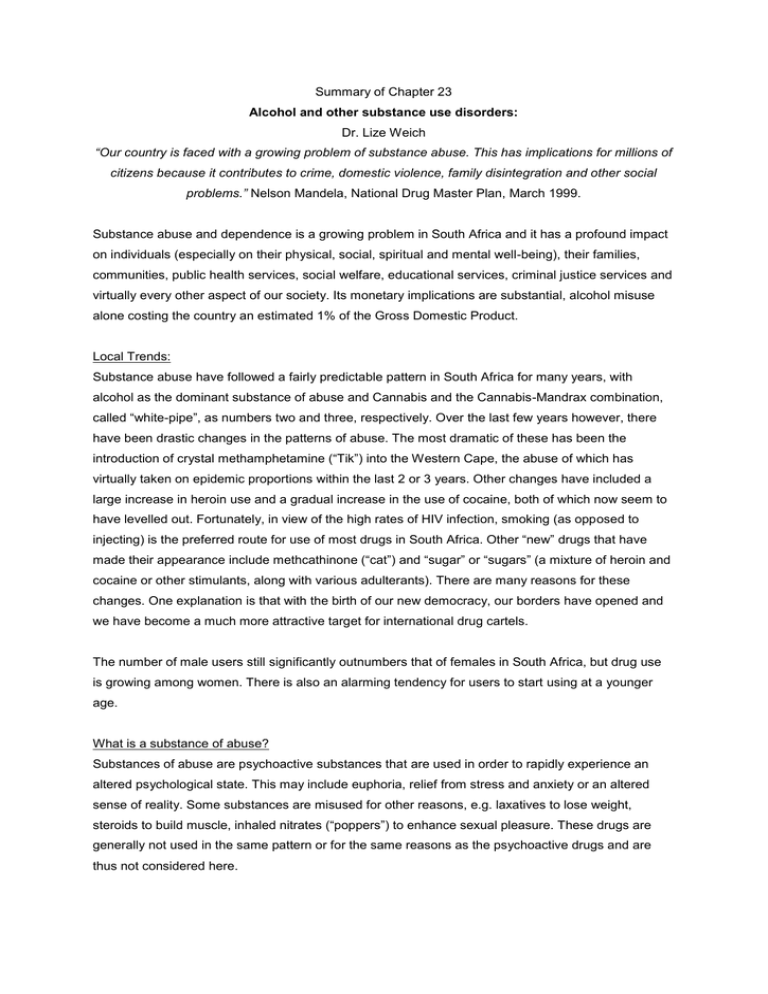
Summary of Chapter 23 Alcohol and other substance use disorders: Dr. Lize Weich “Our country is faced with a growing problem of substance abuse. This has implications for millions of citizens because it contributes to crime, domestic violence, family disintegration and other social problems.” Nelson Mandela, National Drug Master Plan, March 1999. Substance abuse and dependence is a growing problem in South Africa and it has a profound impact on individuals (especially on their physical, social, spiritual and mental well-being), their families, communities, public health services, social welfare, educational services, criminal justice services and virtually every other aspect of our society. Its monetary implications are substantial, alcohol misuse alone costing the country an estimated 1% of the Gross Domestic Product. Local Trends: Substance abuse have followed a fairly predictable pattern in South Africa for many years, with alcohol as the dominant substance of abuse and Cannabis and the Cannabis-Mandrax combination, called “white-pipe”, as numbers two and three, respectively. Over the last few years however, there have been drastic changes in the patterns of abuse. The most dramatic of these has been the introduction of crystal methamphetamine (“Tik”) into the Western Cape, the abuse of which has virtually taken on epidemic proportions within the last 2 or 3 years. Other changes have included a large increase in heroin use and a gradual increase in the use of cocaine, both of which now seem to have levelled out. Fortunately, in view of the high rates of HIV infection, smoking (as opposed to injecting) is the preferred route for use of most drugs in South Africa. Other “new” drugs that have made their appearance include methcathinone (“cat”) and “sugar” or “sugars” (a mixture of heroin and cocaine or other stimulants, along with various adulterants). There are many reasons for these changes. One explanation is that with the birth of our new democracy, our borders have opened and we have become a much more attractive target for international drug cartels. The number of male users still significantly outnumbers that of females in South Africa, but drug use is growing among women. There is also an alarming tendency for users to start using at a younger age. What is a substance of abuse? Substances of abuse are psychoactive substances that are used in order to rapidly experience an altered psychological state. This may include euphoria, relief from stress and anxiety or an altered sense of reality. Some substances are misused for other reasons, e.g. laxatives to lose weight, steroids to build muscle, inhaled nitrates (“poppers”) to enhance sexual pleasure. These drugs are generally not used in the same pattern or for the same reasons as the psychoactive drugs and are thus not considered here. The likelihood that a substance is abused for its psychoactive effects is related, among other things, to how fast the user experiences the desired results after taking the drug, the cost of the drug and the ease of administration. The more quickly a substance crosses the blood-brain barrier, the more rapid is its onset of action and thus the higher its abuse potential. This is determined, among other things, by its route of administration, (injecting or smoking usually has a quicker onset of action than oral ingestion), its half–life (shorter half-life usually more likely to cause dependence) and how fat-soluble it is (the more lipophilic it is, the more quickly the drug reaches the brain). Although some patients may resist taking anti-depressants because of fear of “becoming addicted” to them, dependence is unlikely, because anti-depressants take weeks to have an effect. Tranquilizers like benzodiazepines however do have a high abuse potential, because their desired effect occurs rapidly. What happens if you take a psychoactive substance of abuse? When someone has used such a substance of abuse and is “under its influence”, we refer to it as intoxication. The state of intoxication is substance-specific and reversible. When a psychoactive substance is used repeatedly, we find that the body may adapt to its effects – the same amount no longer gives the same psychoactive effect and higher doses are required to obtain the same rewarding effect initially experienced. This is called tolerance. Another indication of physical adaptation is withdrawal. This is a substance-specific syndrome due to cessation of or a reduction in substance use after heavy and prolonged use. Withdrawal symptoms are often the opposite of intoxication e.g. stimulant intoxication is associated with euphoric feelings and excess energy and withdrawal is associated with depressed mood and exhaustion. Detoxification is the process whereby medication is used to gradually and safely reduce the level of tolerance to normal in order to alleviate or prevent withdrawal symptoms. Disease progression from experimentation to dependence: Although people may inherit a vulnerability to becoming substance dependent, they are not born as addicts. Substances are used for various reasons. Stimulants can make one feel more alert, important and confident and can suppress appetite. Depressants are used for the opposite effect, namely to alleviate stress, decrease anxiety or to escape reality. Psychedelics tend to be used to relieve boredom, out of curiosity or to escape reality. Someone thus starts by experimenting with a substance (for various reasons), end up liking its effects and then use it for recreational purposes. They may move on to use it in a manner that is harmful to them, but can stop or use it in a controlled manner if they decide to do so. Some people, however, find themselves drowning in their habit and dragging down those they love most. They become dependent on the substance. They can never again use the substance in a controlled manner. It is not clear why some people are able to use substances in a controlled manner, while others end up in trouble. It is most likely a complex interplay between genetic, environmental and personal factors. Some substances, like methamphetamine and heroin, tend to cause problems early on, while others, like alcohol or Cannabis, only present late, often after many years of use. This does not mean that these substances are “safer”. It only means that people who use them take longer to present for help.


